The Elegant Vintage Jaeger-LeCoultre Duoplan
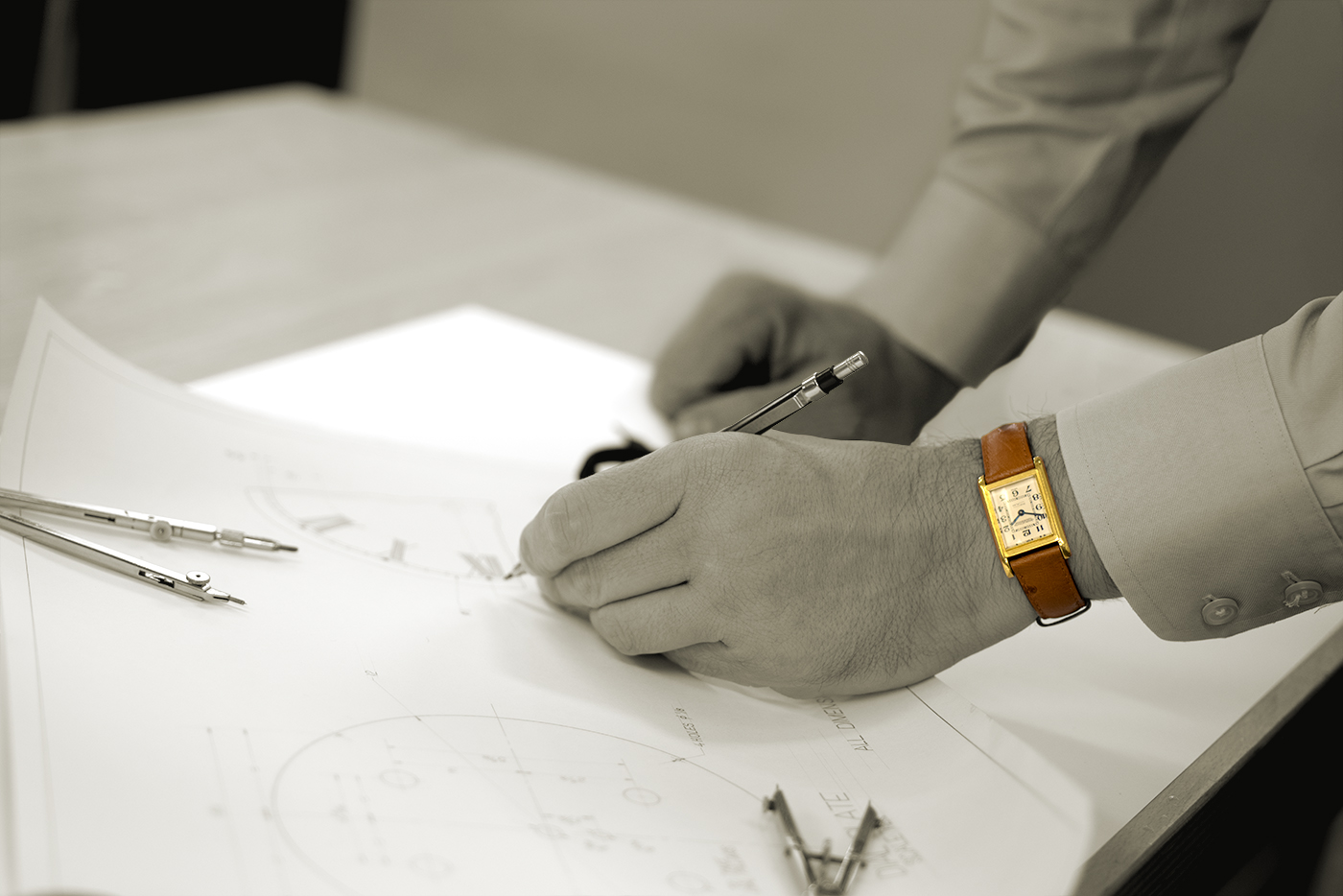

The Jaeger-LeCoultre Duoplan is a family of four calibres that included the smallest watch in the world, the JLC calibre 101. The 101 also has perhaps the longest production run of any movement in history, having first been made in 1929, and is still produced today.
What makes the Duoplan special? It takes normal-sized watch parts, and stacks them in two layers, allowing the movement to be made much narrower. For a watch to be precise and reliable, the ticking balance wheel needs to be a fair size, putting a practical lower limit on the size on how small you can make an ordinary watch.
Jaeger positioned the balance and escapement their own layer, over the top of the rest of the movement. This meant that they could make the balance big, nearly the full width of the movement. This creative move helped a whole generation of makers including Cartier and Vacheron Constantin to come up with new slender and appealing watch designs.
These are the four calibres in the Duoplan family:
Cal. 101 – 6’’’ (14 x 4.8 x 3.4 mm LxWxH). Produced from 1929 to present day.
Cal. 104 – aka Cal. 7BF, 7’’’ (16 x 5.8 x 3.4 mm). Produced from 1926–1959
Cal. 403 – aka Cal. 9BF, 9’’’ (20 x 8.5 x 3.73 mm). Produced from 1926–1966
Cal. 409 – aka Cal. 11BF, 11’’’ (23 x 10.5 x 4 mm). Produced from 1929–1962
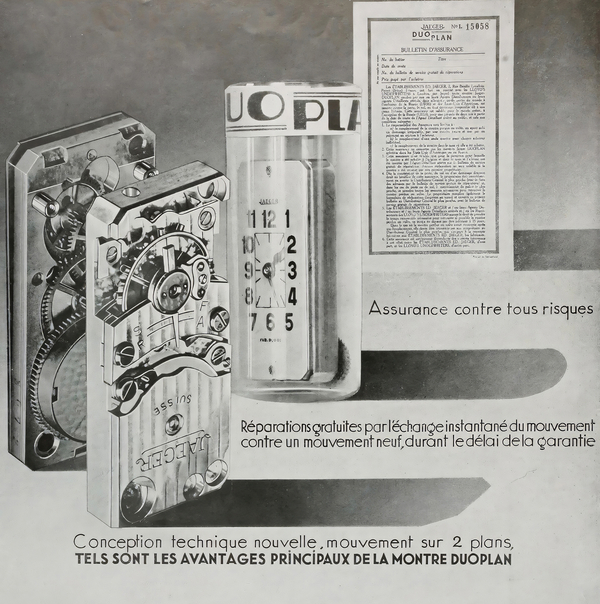
The ‘layered’ design isn't simply wheels overlapping each other – the watch actually has two mainplates. This vintage advert from 1932 shows how. Near the left you can see a mainplate that holds the mainspring barrel and wheel train. Over this is mounted a plate that holds the balance, escapment, and the winding ratchet with its click and clickspring.
Does this extra layer make the movement thick? Well these calibres only range between 3.4 and 4mm – fairly typical, and not very thick.
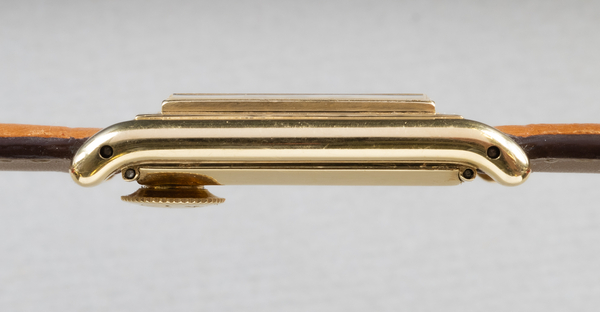
Another key to keeping the watch small and slim was to do away with the side-winding crown. The Duoplan has a winding crown at the back. This means that we don't need all the extra gearing that normally turns the keyless work through ninety degrees. A small left-handed screw holds the crown in place. It has a cute UFO profile, smooth and flat, so you don't really feel it when on the wrist.
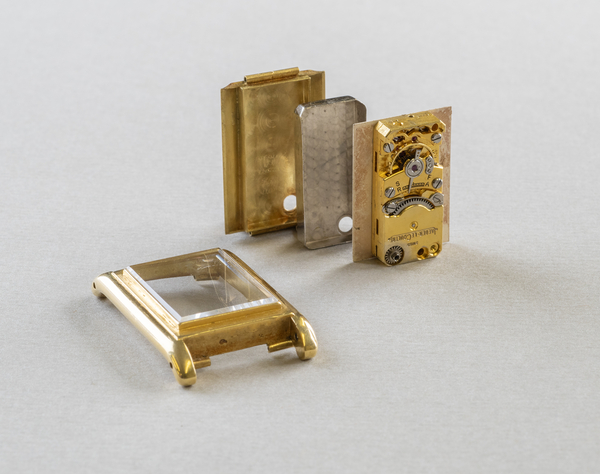
There was a time when watch companies loved to get your watch serviced and back on your wrist as soon as possible. Jaeger-LeCoultre came up with an ingenious customer experience: for a small fee you could get your watch insured by an international insurance policy (underwritten at Lloyd's). With this in place, they would guarantee a rapid turnaround of any Duoplan that needed repair by simply replacing the movement with a factory-fresh one. These replacements were supplied to ADs in little sealed glass capsules (check the backgound of the vintage advert above). One British jeweller even advertised getting your Duoplan serviced "before you can finish your cigarette!"
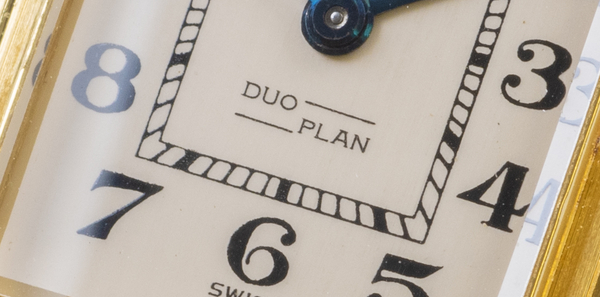
The calibre 409 was used for "Gents" sized watches, but the calibre 101 was an astonishingly small thing. It still holds the world record for the smallest watch movement ever made. That scale comes at a price: in the 1950s, the JLC Calibre 101 cost about £100 to produce (versus ordinary watch movements at under a pound). What we found most interesting about that number was how much of it was the balance spring alone... The calibre's designer, Henri Rodanet, was quoted in 1952 as saying:
"The balance spring is … 1/10th mm high, 1/100th mm thick and 13 mm long. Its weight is approximately 1/10th of a milligram. The price [of the spring], before the fitting, was 2,000 fr. Fitting, including the collet and the stud, cost about 20,000 fr. (£20)."
Fully a fifth of the cost of making the watch was making and fitting the balance spring! No wonder it was deemed special enough to be worn on the most discerning wrists, no less than the 25 year old Queen Elizabeth at her coronation.
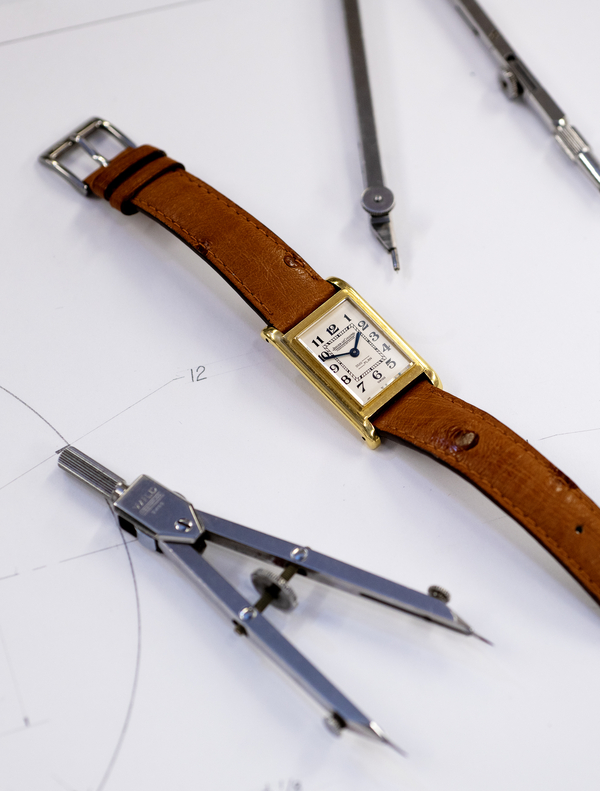
Sadly at Watch Club we've hardly ever been offered any JLC Duoplan watches. Maybe their small size meant that for the past 30 years they've been overlooked by collectors. Mind you, they aren't very water resistant, and JLC will certainly not replace the movement while you smoke outside! An excellent alternative is the Reverso – a classic in the same genre that's no less elegant, discreet and with similarly impeccable credentials.
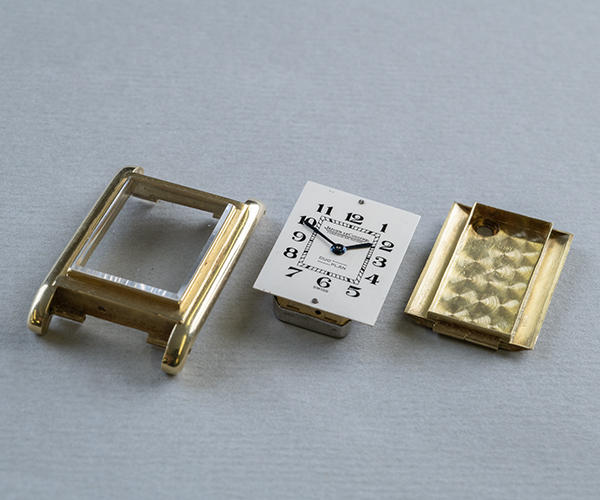
Thanks to our anonymous collector friend who lent us his Duoplan watch for photography. Made in 1950, it is in amazingly sharp and fresh condition. We can't stop admiring the clean sharp lines around the 18ct gold case, and the original glass with its polished bevel. Thanks also to sam Law-Bartle for his help with the main image, and to The Watch Library Foundation for letting us use the scanned advert. They have an amazing archive of digitised horological resources: https://watchlibrary.org/
